Candice Lin
b. 1979, Concord, Massachusetts
Lives in Los Angeles
venue
UNO Gallery
2429 St Claude Avenue, New Orleans, LA 70117
Monday–Tuesday, closed
Wednesday–Sunday, 11–4 PM
neighborhood
Eighth Ward/St. Roch/Faubourg Marigny
about the project
Swamp Fat, 2021
Scagliola, ceramic, clay, earth, mortar, and lard infused with custom scent
Courtesy the artist and François Ghebaly, Los Angeles
Swamp Fat reflects Candice Lin’s recurrent interest in making various histories tangible in the present. To create Swamp Fat, Lin used lard sourced from butchers in Louisiana and clay dug from Saint Malo, the site of the first Asian American settlement in the United States, which was also previously inhabited by Indigenous peoples and enslaved maroons. The sculptures are made using a faux-marbling technique known as scagliola, which relies on a blend of animal hide glue and pigments mixed with gypsum powder. These sculptures serve as the pedestals for ceramic frogs, lizards, and snakes whose bodies are vessels for solid perfumes. Placed along a pathway shaped like a section of the Mississippi River, these stations are sacrificial altars memorializing marginalized histories.
Lin’s materials make tangible connections between indentured Asian laborers, also known pejoratively as “coolies” or “pigs,” and the development of US immigration laws and definitions of whiteness and citizenship. Through her use of lard and animal carcasses, as well as the shape of the installation mimicking the river, Lin also references the Slaughter-House Cases, an 1873 Supreme Court decision that arose after white butchers objected to sharing spaces with Black and other non-white butchers, arguing that it violated their rights. Questioning how race has historically been constructed through the language of animality, contamination, and waste, each of the sculptures is activated with a customized smell of shrimp and decaying vermin infused into the lard using a process known in perfumery as enfleurage.
These perfumes are intentionally designed to reference “demonic smells” that were created to ward off disease and are rooted in pseudoscientific theories from the Middle Ages that resonate with the fears of airborne pathogens and contamination that circulated in the nineteenth century, as well as today.
This exhibition is presented in conjunction with The Agnotology of Tigers, currently on view at the LSU Museum of Art, Baton Rouge.
about the artist
Candice Lin is an American sculptor and installation artist living and working in Los Angeles. She draws from the cultural legacies of colonialism, slavery, and diaspora to inform her work, which she uses to address themes of race, gender, sexuality, and their representations. Lin's recent solo exhibition cycle, A Hard White Body, was presented from 2017 through 2018 at Betonsalon, Paris; Portikus, Frankfurt; and the Logan Center in Chicago. She has also been featured in several group exhibitions at institutions such as the Hammer Museum, Los Angeles (2018), and the New Museum of Contemporary Art, New York (2017). Lin earned a double BA in visual arts and art semiotics from Brown University, Providence (2001), and an MFA from San Francisco Art Institute (2004). She is an assistant professor in the department of art at the School of Arts and Architecture at the University of California, Los Angeles.
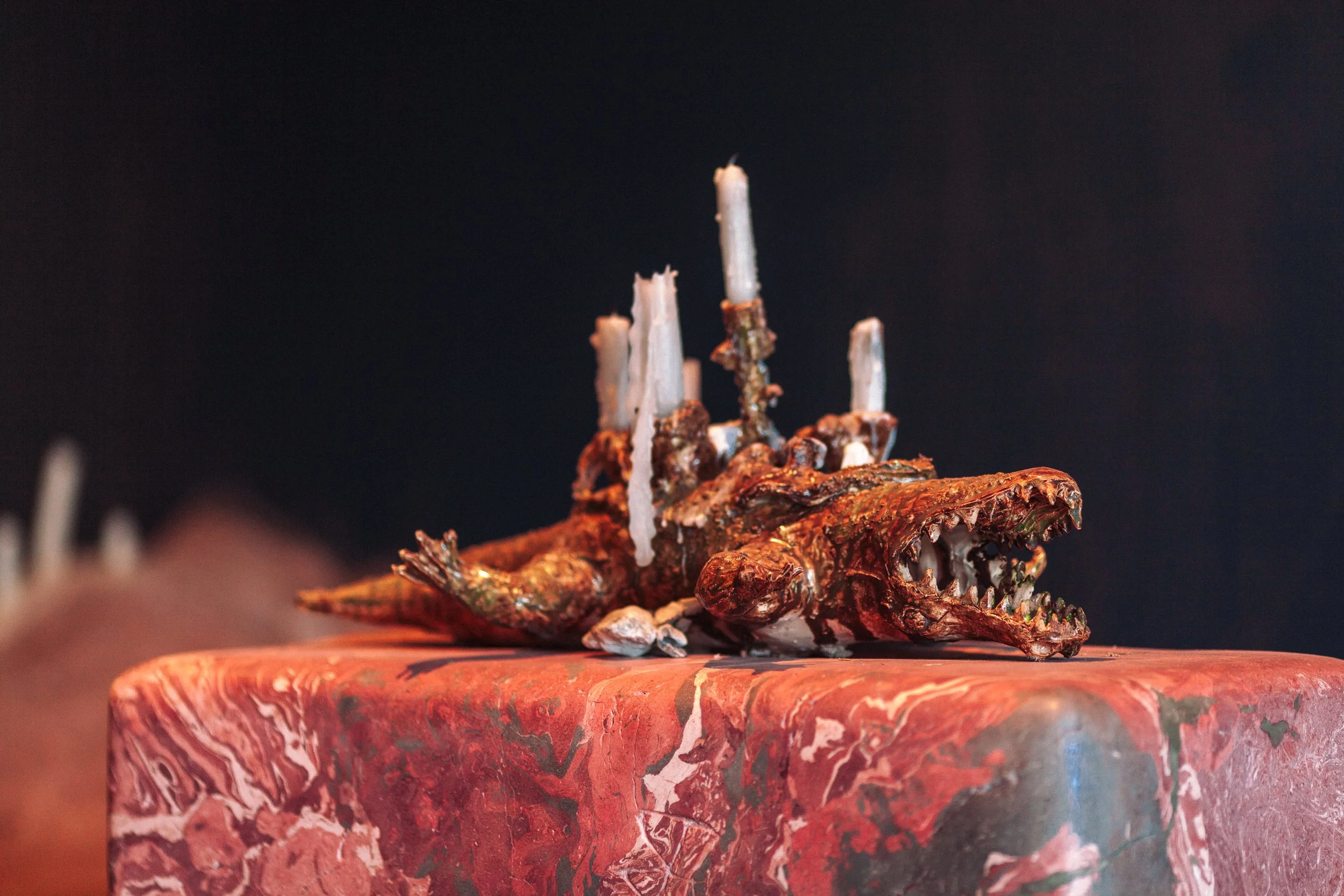
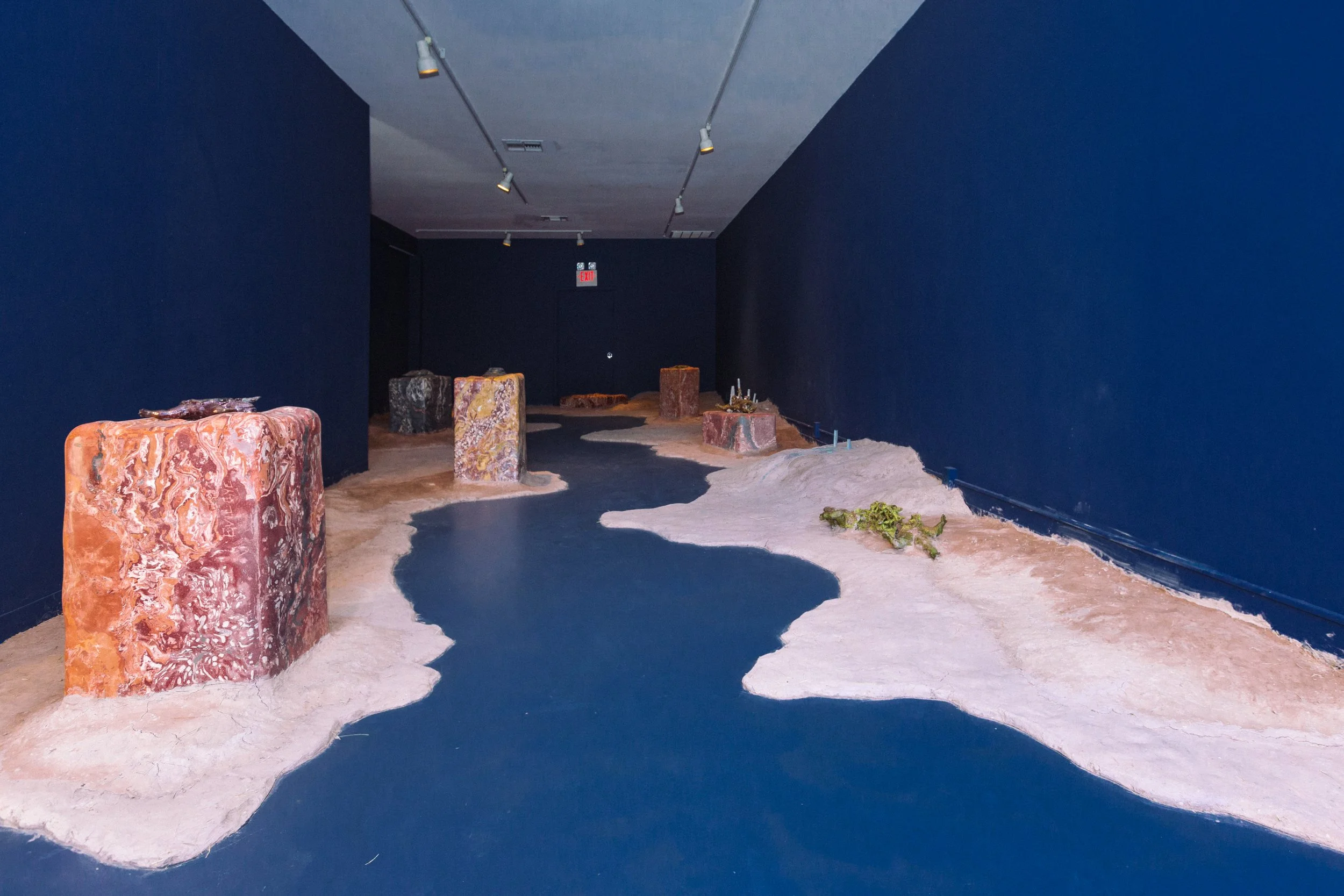

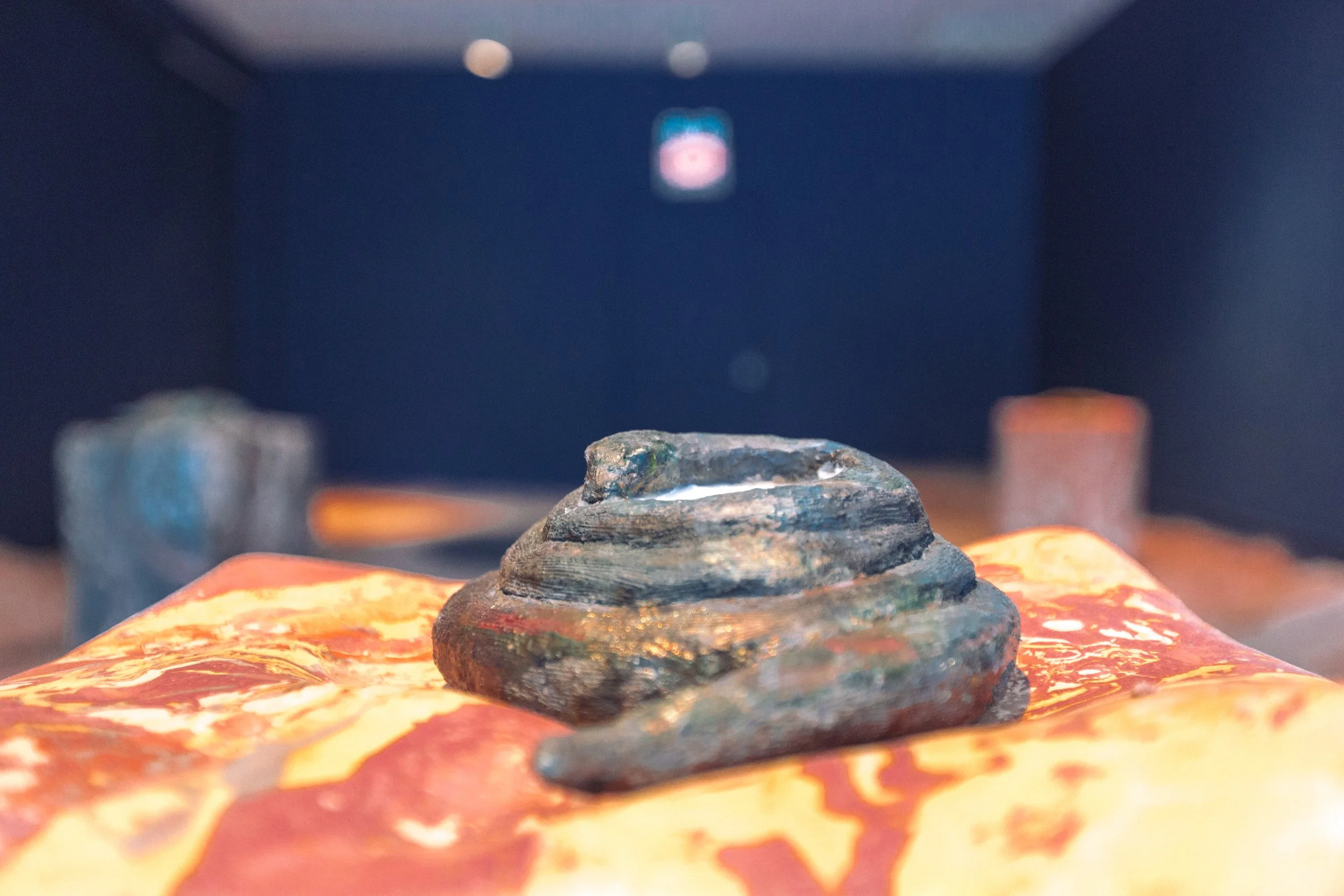

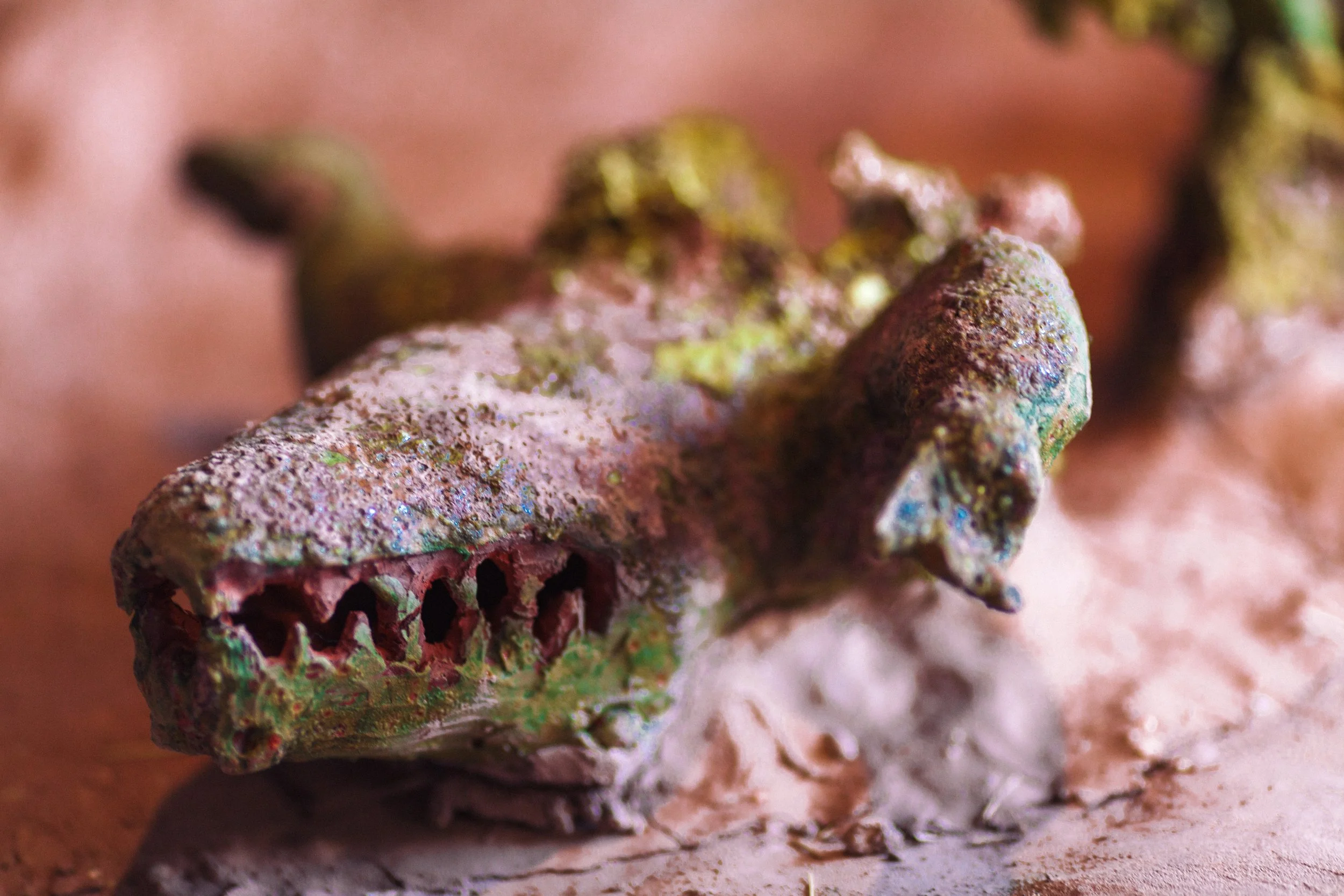
Candice Lin, Swamp Fat, 2021. Scagliola, ceramic, clay, earth, mortar, and lard infused with custom scent, dimensions variable. Installation view: Prospect.5: Yesterday we said tomorrow, 2021–22. University of New Orleans St. Claude Gallery, New Orleans. Courtesy Prospect New Orleans. Photo: Jose Cotto
Jamilah Sabur
b. 1987, St. Andres Parish, Jamaica
Lives in Miami
venues
UNO Gallery
2429 St Claude Avenue, New Orleans, LA 70117
Monday–Tuesday, closed
Wednesday–Sunday, 11 AM–4 PM
New Orleans Lakefront Airport
6001 Stars and Stripes Boulevard, Suite 204, New Orleans, LA 70126
Daily, 7:30 AM–5:30 PM
neighborhood
Eighth Ward/St Roch/Faubourg/Marigny
New Orleans East
ABOUT THE PROJECT
Bulk Pangaea, 2021
Two- and five-channel color videos, with sound, varying times dependent on location
Courtesy the artist and Nina Johnson, Miami
For Prospect.5, Jamilah Sabur choreographed disparate pieces of visual information that investigate the social, economic, and environmental consequences of technological progress and space exploration. Sabur traced the movement of Bauxite—a raw material sourced from tropical and subtropical regions that is used to make aluminum—from a mine in Port Rhoades, Discovery Bay, Jamaica, to factories in Louisiana. An essential material for the aero, space, and technology industries, Bauxite is currently being mined from Cockpit Country, a rugged part of western Jamaica whose difficult-to-navigate landscape historically provided sanctuary for maroon communities––individuals who escaped slavery––and today holds precious sources of fresh water, increasingly threatened by mining.
Named for a cargo ship that transports Bauxite from Jamaica to Louisiana, Bulk Pangaea juxtaposes scenes of industry, history, and nature—both real and imagined, terrestrial and extraterrestrial. The film opens with a conveyor belt moving Bauxite at a factory alongside a 3D rendering of Mars’s landscape—a sight that recalls the mountains of Cockpit Country after excavation. At the end, lush nature scenes contrast against an animated sequence featuring a Victorian greenhouse in a barren place populated by four figures wearing iconic Russian Sokol KV-2 spacesuits. Purposefully ambiguous, the landscape could be either Mars or the red bauxite fields of Jamaica. Through these juxtapositions, Sabur connects raw materials with their source, the products they become, and their ultimate destination, emphasizing relationships across space and time that brought us to this point.
about the artist
Jamilah Sabur is a multidisciplinary artist who works in performance, video, and installation. She frequently references her Jamaican heritage, as well as geography and geology in her pieces, which explore the temporary nature of our world and of our fleeting presence in it, a fact that connects us all. She uses language and landscape to depict the relationship between memory and community. Hammer Projects: Jamilah Sabur was featured at the Hammer Museum, Los Angeles, in 2019. Several galleries and institutions have exhibited her work, such as Nina Johnson, Miami; Pérez Art Museum, Miami; the New Orleans Museum of Art; and the Museum of Contemporary Art, Detroit, among others. Sabur earned a BFA from the Maryland Institute College of Art, Baltimore (2009), and an MFA from the University of California, San Diego (2014).

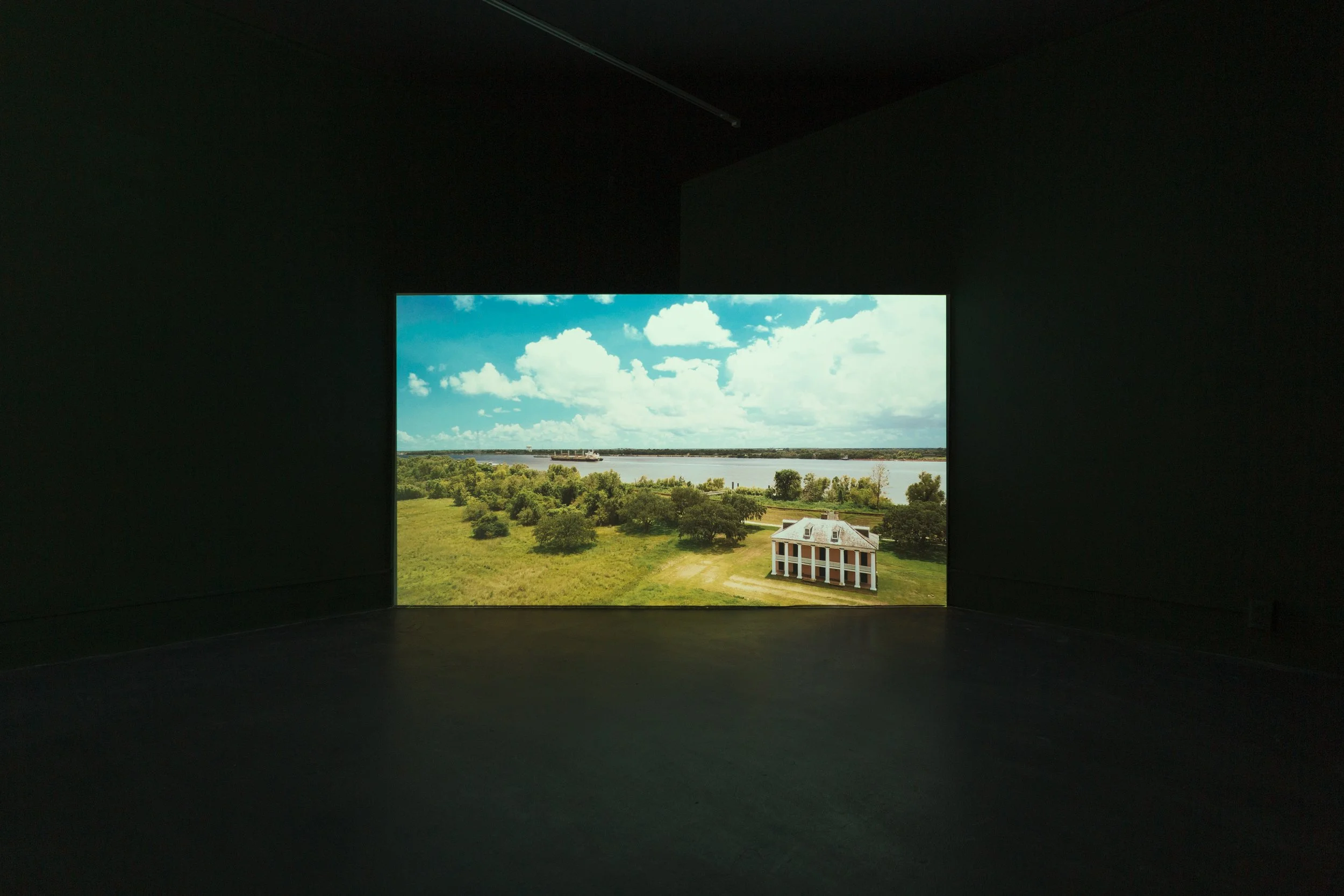




Jamilah Sabur, Bulk Pangaea, 2021. Two-channel color video, with sound, 17 minutes, 22 seconds. Installation view: Prospect.5: Yesterday we said tomorrow, 2021–22. University of New Orleans St. Claude Gallery, New Orleans. Courtesy Prospect New Orleans. Photo: Jose Cotto
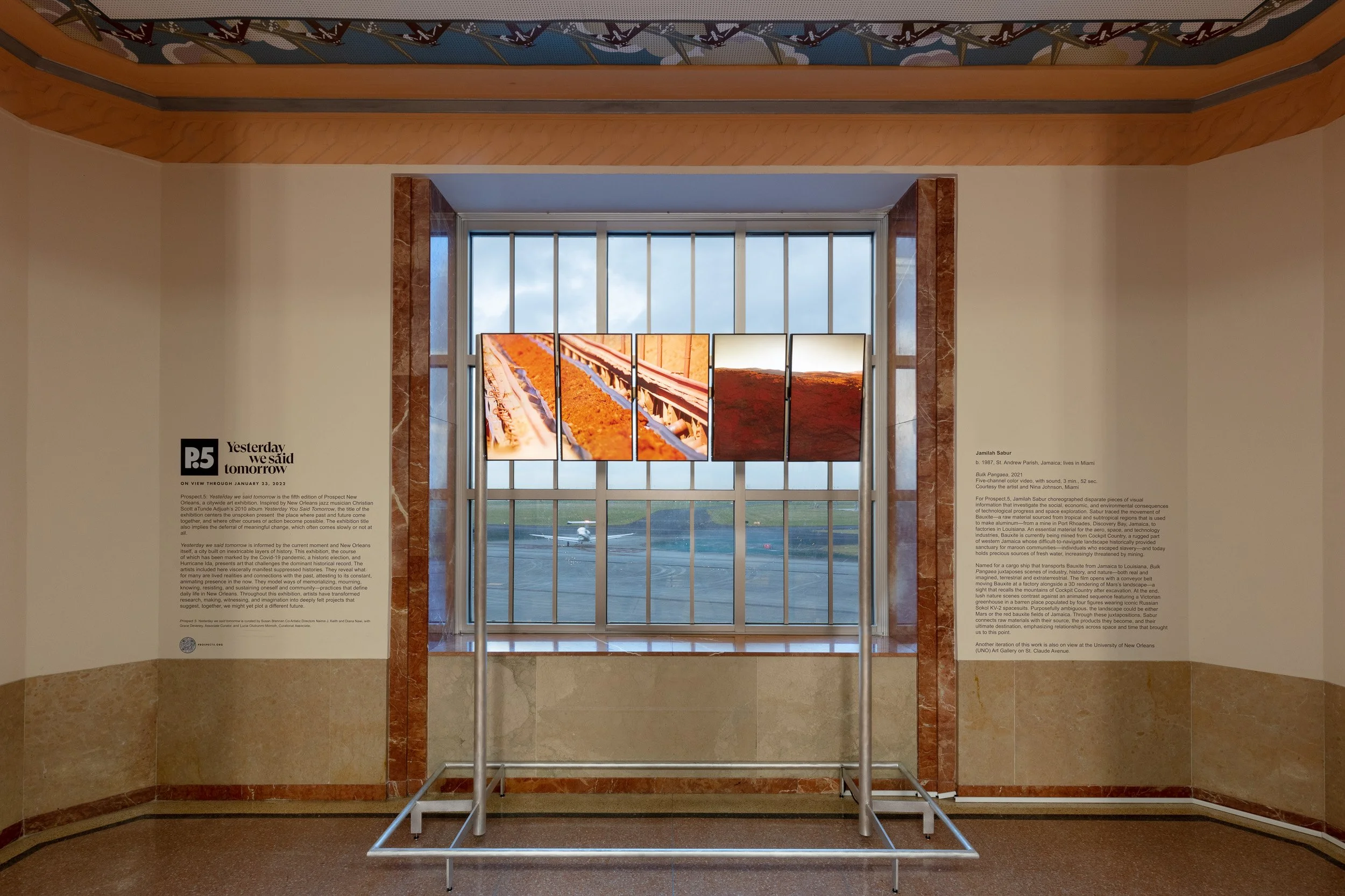

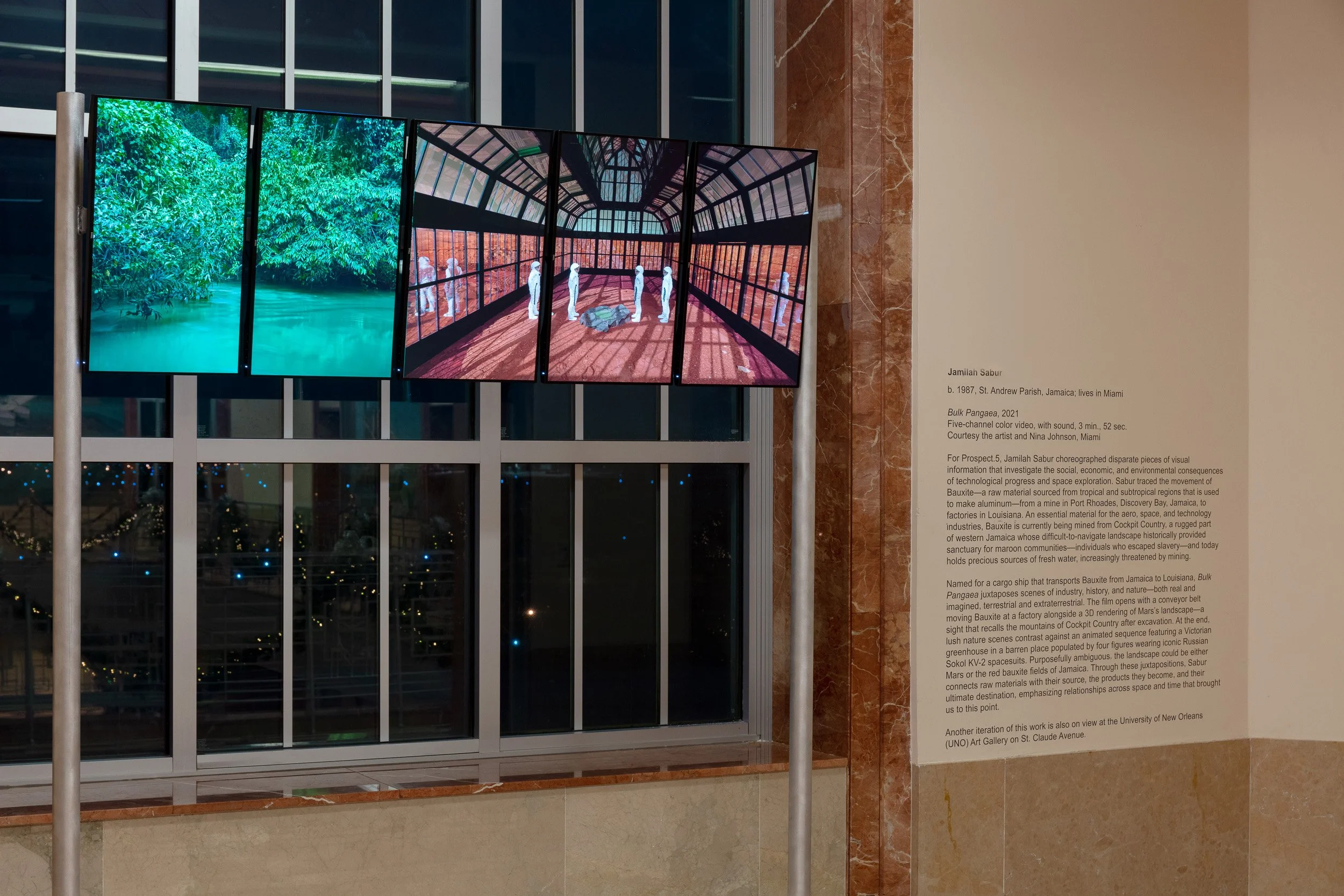
Jamilah Sabur, Bulk Pangaea, 2021. Five-channel color video, with sound, 3 minutes, 52 seconds. Installation view: Prospect.5: Yesterday we said tomorrow, 2021–22. New Orleans Lakefront Airport, New Orleans. Courtesy Prospect New Orleans. Photos: Jonathan Traviesa
Nari Ward
b. 1963, Saint Andrew Parish, Jamaica
Lives in New York
VENUEs
New Orleans African American Museum
1418 Governor Nicholls Street, New Orleans, LA 70116
Wednesday–Sunday, 11 AM–4 PM*
*Audio plays every hour, on the hour. Duration: 15 min.
previously stationed at
823 N Claiborne Avenue
December 10–20, 2021
UNO Gallery
November 6–December 10, 2021
neighborhood
Eighth Ward/St. Roch/Faubourg Marigny
About the project
Battle Ground Beacon, 2021
Refashioned portable light tower and audio equipment
Courtesy the artist and Lehmann Maupin
Best known for his sculptures and installations, Nari Ward transforms everyday objects through unexpected juxtapositions and an emphasis on material, labor, and location. Having taken part in Prospect.1, Ward returned to New Orleans for Prospect.5 to create Battleground Beacon. The title references both the Battleground Baptist Church in the Lower Ninth Ward—the site where the artist worked in 2008—and the portable police floodlights from which the work is made. Instead of illuminating and surveilling spaces, the lights have been replaced by megaphones that amplify sound, becoming a beacon of communication to the public that affirms Black life and calls for social equity and justice.
The sound is based on the artist’s 2008 audio piece that played inside the church, and features speeches by Malcolm X and Martin Luther King Jr., as well as Buddhist chanting by Tina Turner. The artist has transformed this older work by adding a cacophony of new voices, ranging from important historical figures such as writers James Baldwin and Amiri Baraka and congresswoman Shirley Chisholm, to contemporary voices including scholar Cornel West and Amanda Gorman, the young poet who read at the 2020 Presidential Inauguration. Layered with ambient sounds of water and machinery, and woven together by Turner’s chants, the resulting composition calls to account ongoing racial violence and interrogates the fractured state of our nation. Ward has described this work as a “call to prayer.” It is also a call to consciousness and action. It is a call to, as Angela Davis has said, “dedicate ourselves to collective resistance.”
Sound composition by Andres Levin and Moisés Sacal Hadid (recorded at Tribe Caribe CDMX, Mexico City)
Experience the Battleground Beacon audio below:
about the artist
Nari Ward’s sculptures incorporate a wide range of found objects, including strollers, shoelaces, obsolete technology, and fire hoses, juxtaposed to create evocative yet open-ended installations. Through his materials, Ward raises questions about race, class, and consumption, and about how traces of these social phenomena are evidenced in everyday objects. Ward participated in Prospect.1 (2008–9) and has been invited to return to New Orleans with this history in mind. Recent exhibitions of his work include Nari Ward: We the People, Contemporary Arts Museum Houston and New Museum of Contemporary Art, New York (both 2019), and Nari Ward: Sun Splashed, Institute of Contemporary Art, Boston (2017), Barnes Foundation, Philadelphia (2016), and Pérez Art Museum Miami (2015). Ward has been the recipient of numerous awards, including the United States Artists Fellowship Award (2020), Vilcek Prize in Fine Arts (2017), and the Joyce Award (2015). Ward received a BA from the City University of New York, Hunter College (1989), and an MFA from the City University of New York, Brooklyn College (1992).




Nari Ward, Battle Ground Beacon, 2021. Refashioned portable light tower and audio equipment, 354 x 112 x 130 inches. Installation view: Prospect.5: Yesterday we said tomorrow, 2021–22. 823 N Claiborne Avenue, New Orleans. Courtesy Prospect New Orleans. Photo: Alex Marks

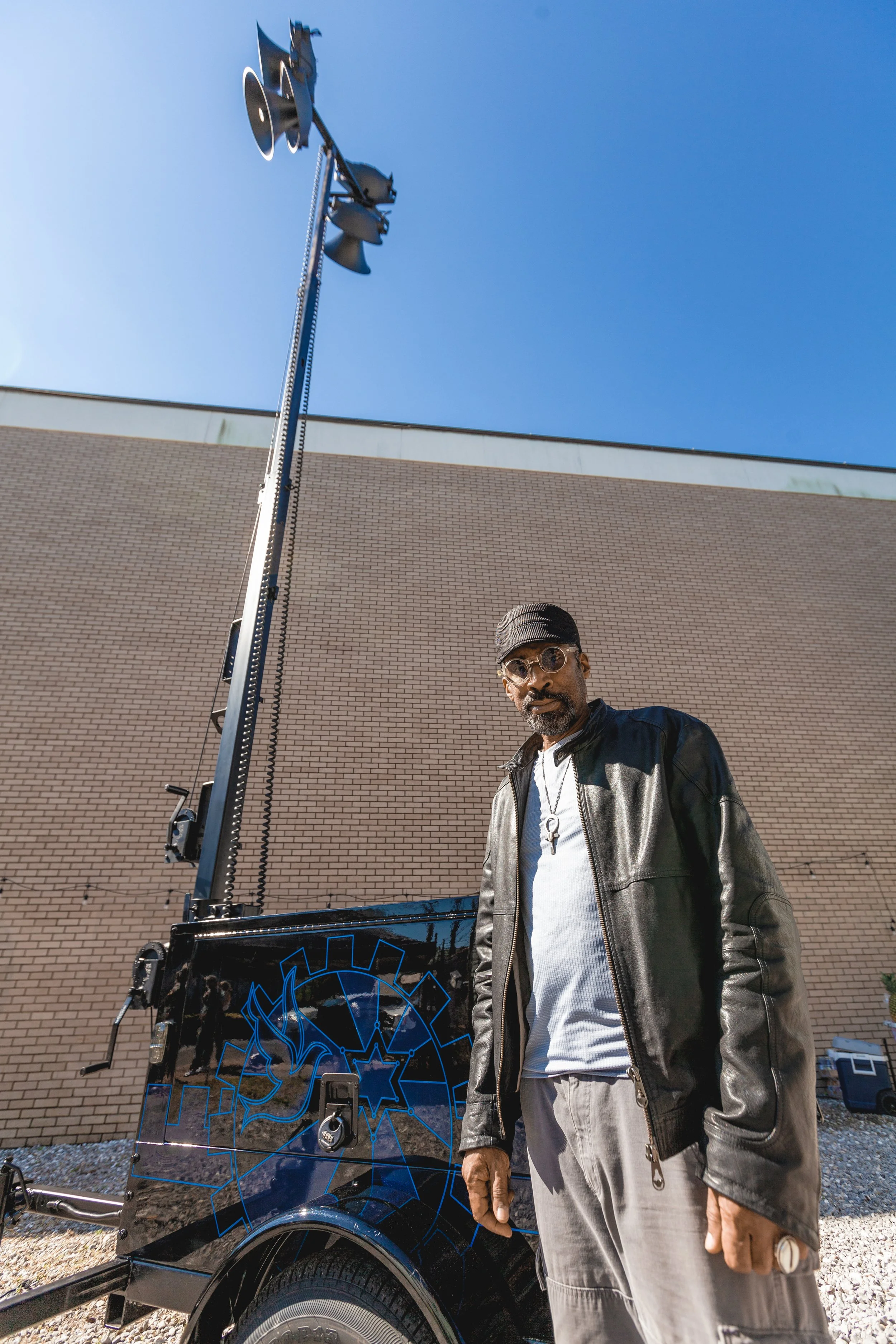

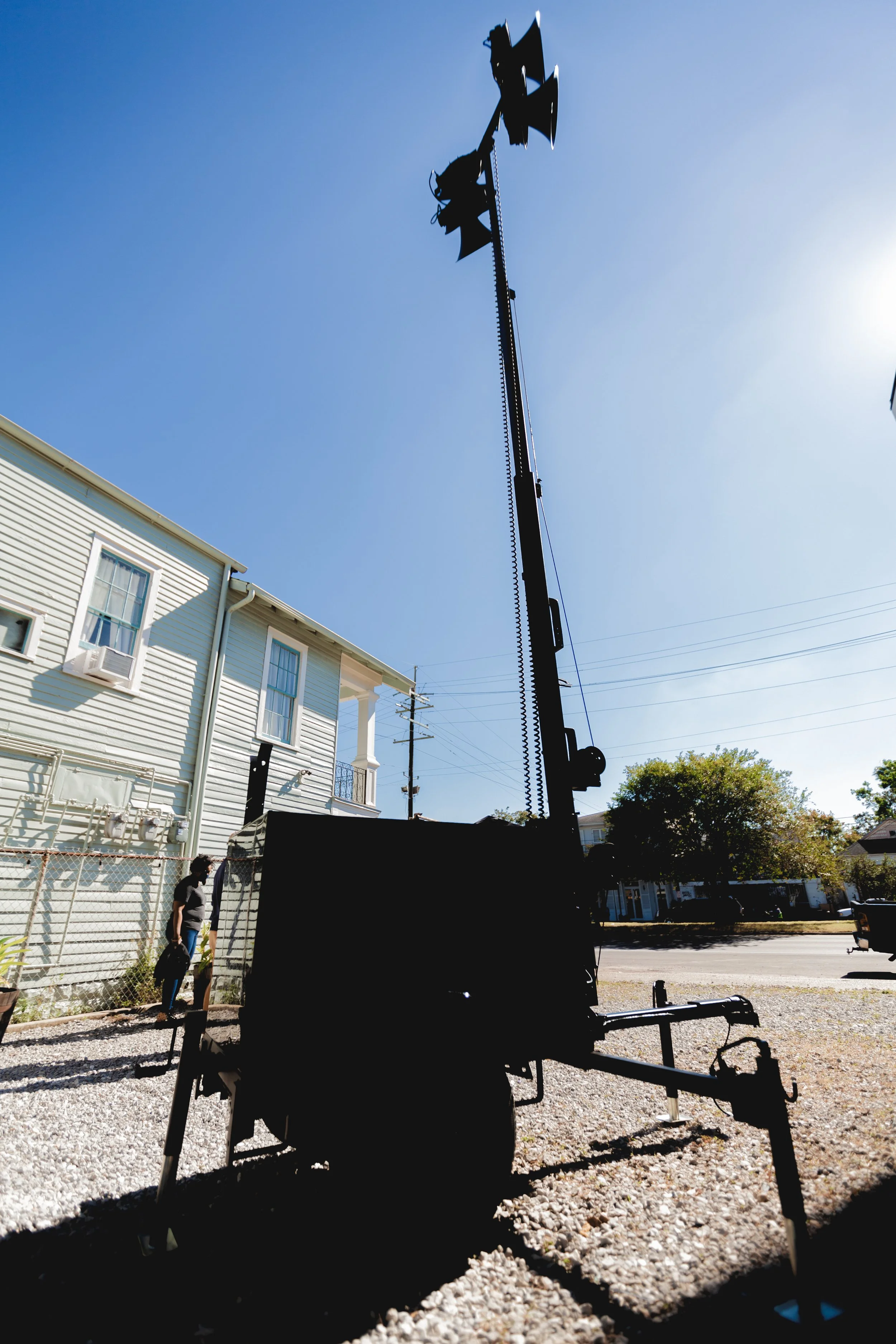
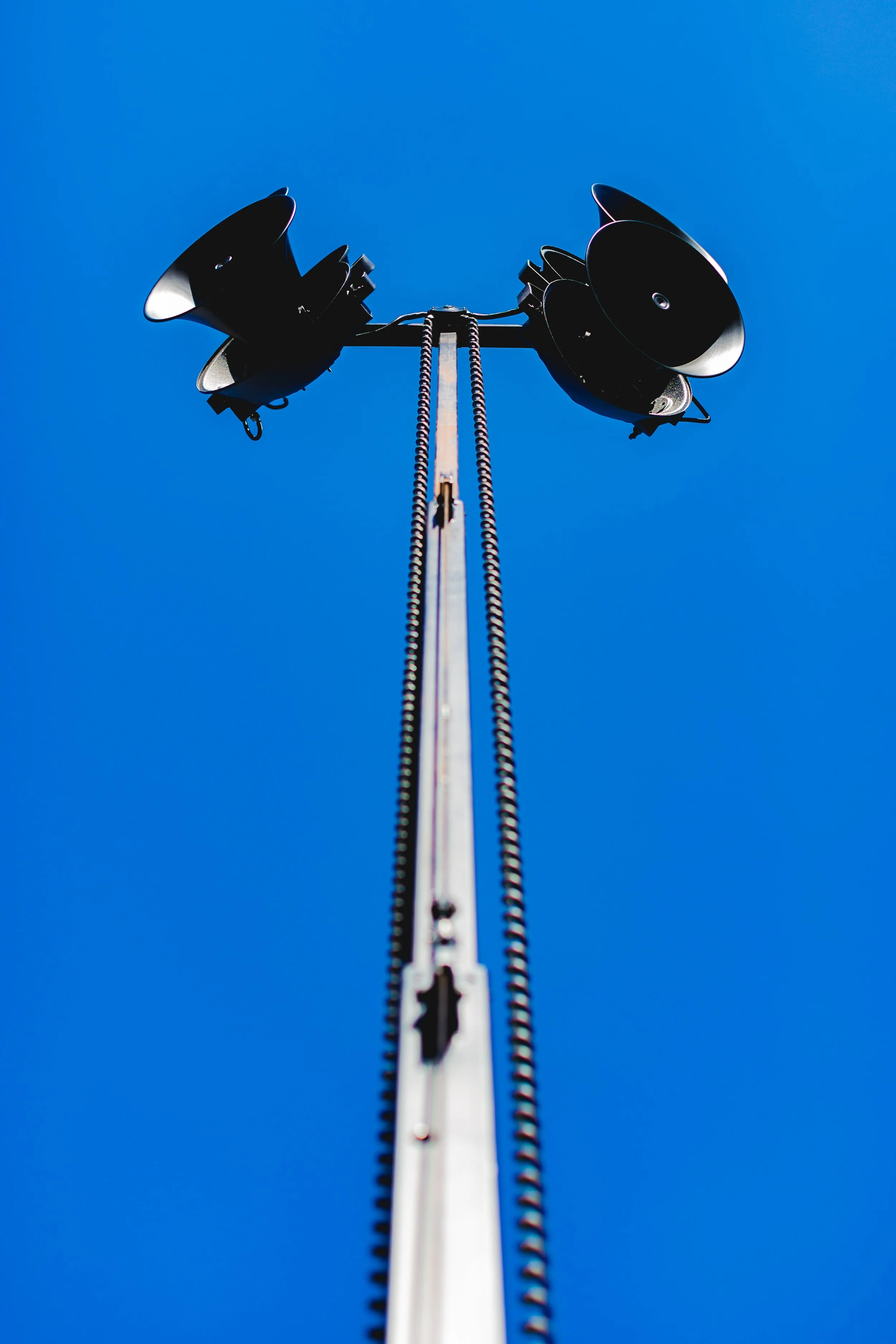
Nari Ward, Battle Ground Beacon, 2021. Refashioned portable light tower and audio equipment, 354 x 112 x 130 inches. Installation view: Prospect.5: Yesterday we said tomorrow, 2021–22. University of New Orleans St. Claude Art Gallery, New Orleans. Courtesy Prospect New Orleans. Photo: Jose Cotto